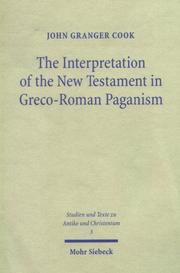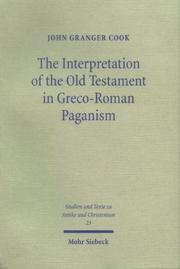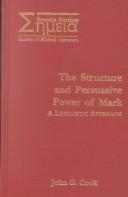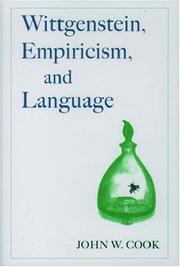| Listing 1 - 10 of 23 | << page >> |
Sort by
|
Book
ISBN: 0421886706 9780421886704 Year: 2005 Publisher: London Sweet & Maxwell
Abstract | Keywords | Export | Availability | Bookmark
 Loading...
Loading...Choose an application
- Reference Manager
- EndNote
- RefWorks (Direct export to RefWorks)
Economic law --- European Union --- Consolidation and merger of corporations --- Law and legislation --- Antitrust law --- -Consolidation and merger of corporations --- -Acquisition of corporations --- Acquisitions and mergers --- Amalgamation of corporations --- Business combinations --- Business mergers --- Buyouts, Corporate --- Corporate acquisitions --- Corporate buyouts --- Corporate mergers --- Corporate takeovers --- Corporations --- Fusion of corporations --- Hostile takeovers of corporations --- M & A (Mergers and acquisitions of corporations) --- Merger of corporations --- Mergers and acquisitions of corporations --- Mergers, Corporate --- Takeovers, Corporate --- Corporate reorganizations --- Golden parachutes (Executive compensation) --- Industrial concentration --- Trusts, Industrial --- Anti-trust law --- Competition --- Competition law --- Commercial law --- Trade regulation --- Consolidation --- Mergers --- Law --- -Antitrust law --- Fusion d'entreprises --- Concurrence --- Droit --- Droit européen --- Consolidation and merger of corporations - Law and legislation - European Union countries. --- Consolidation and merger of corporations - Law and legislation - European Union countries --- Droit européen

ISBN: 3161471954 9783161471957 Year: 2000 Volume: 3. Publisher: Tübingen Mohr Siebeck
Abstract | Keywords | Export | Availability | Bookmark
 Loading...
Loading...Choose an application
- Reference Manager
- EndNote
- RefWorks (Direct export to RefWorks)
Classical literature --- Bible NT --- Christianity --- Christianity and other religions --- Paganism --- Christianisme --- Paganisme --- Controversial literature --- History and criticism. --- Roman. --- Ouvrages de controverse --- Histoire et critique --- Relations --- Religion romaine --- Bible. --- Criticism, interpretation, etc. --- History and criticism --- Roman --- Bible --- Criticism, interpretation, etc --- 225.08*9 --- -Christianity and other religions --- -Christianity --- Syncretism (Christianity) --- Religions --- Church history --- Theologie van het Nieuw Testament: relatie met het hellenisme --- -History --- History --- -Theologie van het Nieuw Testament: relatie met het hellenisme --- 225.08*9 Theologie van het Nieuw Testament: relatie met het hellenisme --- -225.08*9 Theologie van het Nieuw Testament: relatie met het hellenisme --- Controversial literature&delete& --- Ba-yon Tipan --- Bagong Tipan --- Jaji ma Hungi --- Kainē Diathēkē --- New Testament --- Nouveau Testament --- Novo Testamento --- Novum Testamentum --- Novyĭ Zavet --- Novyĭ Zavi︠e︡t Gospoda nashego Īisusa Khrista --- Novyĭ Zavit --- Nuevo Testamento --- Nuovo Testamento --- Nye Testamente --- Perjanjian Baru --- Dhamma sacʻ kyamʻʺ --- Injīl --- Christianity - Controversial literature - History and criticism --- Christianity and other religions - Roman

ISSN: 14363003 ISBN: 3161484746 9783161484742 Year: 2004 Volume: 23 Publisher: Tubingen Mohr Siebeck
Abstract | Keywords | Export | Availability | Bookmark
 Loading...
Loading...Choose an application
- Reference Manager
- EndNote
- RefWorks (Direct export to RefWorks)
Bible. --- Bible. O.T. --- Criticism, interpretation, etc. --- Versions --- Influence --- Bible --- Criticism, interpretation, etc --- 221.08*9 --- Theologie van het Oude Testament: relatie met het hellenisme --- Antico Testamento --- Hebrew Bible --- Hebrew Scriptures --- Kitve-ḳodesh --- Miḳra --- Old Testament --- Palaia Diathēkē --- Pentateuch, Prophets, and Hagiographa --- Sean-Tiomna --- Stary Testament --- Tanakh --- Tawrāt --- Torah, Neviʼim, Ketuvim --- Torah, Neviʼim u-Khetuvim --- Velho Testamento --- -Criticism, interpretation, etc. --- 221.08*9 Theologie van het Oude Testament: relatie met het hellenisme
Book
ISBN: 9783161505539 3161505530 Year: 2010 Volume: 261 Publisher: Tübingen Mohr Siebeck
Abstract | Keywords | Export | Availability | Bookmark
 Loading...
Loading...Choose an application
- Reference Manager
- EndNote
- RefWorks (Direct export to RefWorks)
Christianity --- Church and state --- Emperors --- Christianisme --- Eglise et Etat --- Empereurs --- History. --- Histoire --- Rome --- Politics and government. --- Politique et gouvernement --- History --- Politics and government --- 937.07 --- 27 "00/01" --- Geschiedenis van Rome: constitutioneel keizerrijk van Augustus tot de soldatenkeizers--(31 v. Chr.-284 n. Chr.) --- Kerkgeschiedenis--?"00/01" --- 937.07 Geschiedenis van Rome: constitutioneel keizerrijk van Augustus tot de soldatenkeizers--(31 v. Chr.-284 n. Chr.) --- Czars (Emperors) --- Rulers --- Sovereigns --- Tsars --- Tzars --- Kings and rulers --- Christianity and state --- Separation of church and state --- State and church --- State, The --- Religions --- Church history --- Christianity - Rome --- Church and state - Rome --- Emperors - Rome - History --- Rome - Politics and government - 30 BC-284 AD
Book
ISBN: 9781575062563 1575062569 1575066815 9781575066813 Year: 2012 Volume: 7 Publisher: Winona Lake Eisenbrauns
Abstract | Keywords | Export | Availability | Bookmark
 Loading...
Loading...Choose an application
- Reference Manager
- EndNote
- RefWorks (Direct export to RefWorks)
In this book John Cook interacts with the range of approaches to the perennial questions on the Biblical Hebrew verb in a fair-minded approach. Some of his answers may appear deceptively traditional, such as his perfective-imperfective identification of the qatal-yiqtol opposition. However, his approach is distinguished from the traditional approaches by its modern linguistic foundation. One distinguishing sign is his employment of the phrase "aspect prominent" to describe the Biblical Hebrew verbal system. As with almost any of the world's verbal systems, this aspect-prominent system can express a wide range of aspectual, tensed, and modal meanings. In chap. 3, he argues that each of the forms can be semantically identified with a general meaning and that the expressions of specific aspectual, tensed, and modal meanings by each form are explicable with reference to its general meaning. After a decade of research and creative thinking, the author has come to frame his discussion not with the central question of "Tense or Aspect?" but with the question "What is the range of meaning for a given form, and what sort of contextual factors (syntagm, discourse, etc.) help us to understand this range in relation to a general meaning for the form?" In chap. 4 Cook addresses long-standing issues involving interaction between the semantics of verbal forms and their discourse pragmatic functions. He also proposes a theory of discourse modes for Biblical Hebrew. These discourse modes account for various temporal relationships that are found among successive clauses in Biblical Hebrew. Cook's work addresses old questions with a fresh approach that is sure to provoke dialogue and new research.
Hebrew language --- Hébreu (Langue) --- Tense. --- Verb. --- Temps --- Verbe --- Bible. --- Language, style. --- Bible --- Language, style --- 221.02*1 --- Jewish language --- Jews --- Semitic languages, Northwest --- Oud Testament: bijbelse filologie: hebreeuws --- Languages --- Antico Testamento --- Hebrew Bible --- Hebrew Scriptures --- Kitve-ḳodesh --- Miḳra --- Old Testament --- Palaia Diathēkē --- Pentateuch, Prophets, and Hagiographa --- Sean-Tiomna --- Stary Testament --- Tanakh --- Tawrāt --- Torah, Neviʼim, Ketuvim --- Torah, Neviʼim u-Khetuvim --- Velho Testamento --- 221.02*1 Oud Testament: bijbelse filologie: hebreeuws --- Hébreu (Langue) --- Tense --- Verb --- Aspekt --- Hebräisch --- Modalität --- Europäische Kommission --- Europaweites Mobilitätsprogramm für den Hochschulbereich --- Trans-European Mobility Scheme for University Studies --- Trans-European Mobility Programme for University Studies --- Tempus --- Tempus Programm --- Tempus Projekt --- Tempus Programme --- Tempus Project --- Hochschulbildung --- Förderungsprogramm --- Supranationale Organisation --- 07.05.1990-08.11.1993 --- Bible / O.T. / Language, style. --- Althebräisch --- Biblisches Hebräisch --- Bibelhebräisch --- Alttestamentliches Hebräisch --- Klassisches Hebräisch --- Biblisch-hebräisch --- Kanaanäische Sprachen --- Jüdische Sprachen --- Hebraistik --- Verbalaspekt --- Aktionsart --- Verbum --- Zeitwort --- Verbalsystem --- Tunwort --- Verben --- Hebrew language - Tense. --- Hebrew language - Verb.

ISBN: 0788500287 9780788500282 Year: 1995 Volume: 28 Publisher: Atlanta: Scholars Press,
Abstract | Keywords | Export | Availability | Bookmark
 Loading...
Loading...Choose an application
- Reference Manager
- EndNote
- RefWorks (Direct export to RefWorks)
Linguistics --- Bible. --- Criticism, interpretation, etc. --- 226.3 --- Evangelie volgens Marcus --- Linguistic science --- Science of language --- Language and languages --- Marco (Book of the New Testament) --- Mark (Book of the New Testament) --- Markus (Book of the New Testament) --- Markusevangelium --- Vangelo di Marco --- Book of Mark
Book
ISBN: 9783161537646 9783161531248 3161531248 3161537645 Year: 2015 Volume: 327 Publisher: Tübingen : Mohr Siebeck,
Abstract | Keywords | Export | Availability | Bookmark
 Loading...
Loading...Choose an application
- Reference Manager
- EndNote
- RefWorks (Direct export to RefWorks)
"To understand the phenomenon of Roman crucifixion, the author argues that one should begin with an investigation of the evidence from Latin texts and inscriptions (such as the lex Puteolana [the law of Puteoli]) supplemented by what may be learned from the surviving archaeological material (e.g., the Arieti fresco of a man on a patibulum [horizontal beam], the Puteoli and Palatine graffiti of crucifixion, the crucifixion nail in the calcaneum bone from Jerusalem, and the Pereire gem of the crucified Jesus [III CE]). This evidence clarifies the precise meaning of terms such as patibulum and crux (vertical beam or cross), which in turn illuminate the Greek terms [e.g., stauros, stauroo, and anastauroo] and texts that describe crucifixion or penal suspension. It is of fundamental importance that Greek texts be read against the background of Latin texts and Roman historical practice. The author traces the use of the penalty by the Romans until its probable abolition by Constantine and its eventual transformation into the Byzantine punishment by the furca (the fork), a form of penal suspension that resulted in immediate death (a penalty illustrated by the sixth century Vienna Greek codex of Genesis). Cook does not neglect the legal sources -- including the question of the permissibility of the crucifixion of Roman citizens and the crimes for which one could be crucified. In addition to the Latin and Greek authors, texts in Hebrew and Aramaic that refer to penal suspension and crucifixion are examined. Brief attention is given to crucifixion in the Islamic world and to some modern forms of penal suspension including haritsuke (with two photographs), a penalty closely resembling crucifixion that was used in Tokugawan Japan. The material contributes to the understanding of the crucifixion of Jesus and has implications for the theologies of the cross in the New Testament. The relevant ancient images are included"--
Crucifixion --- Executions (Ancient law) --- Executions and executioners --- History --- Jesus Christ --- Bible --- Rome --- Exécutions capitales --- Executions (Ancient law). --- Crucifixion of Jesus Christ. --- Executions and executioners. --- Kreuzigung. --- Straffen. --- Kruisiging. --- Jesus Christ. --- Middellandse-Zeegebied. --- Exécutions capitales --- Histoire --- Bible. --- 225*5 --- 225*5 Laatste avondmaal. Proces van Jezus. Lijden. Kruisiging --- Laatste avondmaal. Proces van Jezus. Lijden. Kruisiging --- Antike. --- Crucifixion. --- Frühjudentum. --- Griechisch. --- Latein. --- Literatur. --- Zeithintergrund. --- History. --- Rome (Empire). --- Römisches Reich. --- Executions and executioners - History --- Jesus Christ - Crucifixion --- Rome - History

ISBN: 019513298X 0195343999 1280472952 0585364737 9780585364735 9780195132984 9781280472954 9780195343991 019773197X Year: 2000 Publisher: New York : Oxford University Press,
Abstract | Keywords | Export | Availability | Bookmark
 Loading...
Loading...Choose an application
- Reference Manager
- EndNote
- RefWorks (Direct export to RefWorks)
John W. Cook demonstrates how Wittgenstein's philosophical views have been misunderstood, including the failure to recognize the reductionist character of Wittgenstein's work and the unacknowledged influence of Russell.
Reductionism --- Reductionisme --- Reductionnisme --- -Reductionism --- Language and languages --- Philosophy --- Wittgenstein, Ludwig, --- Wittgenstein, Ludwig --- Wittgenstein, Ludwig, - 1889-1951. --- Wei-tʻe-ken-ssu-tʻan, --- Wei-tʻe-ken-ssu-tʻan, Lu-te-wei-hsi, --- Wittgenstein, L. --- Vitgenshteĭn, L., --- Wei-ken-ssu-tʻan, --- Pitʻŭgensyutʻain, --- Vitgenshteĭn, Li︠u︡dvig, --- Weitegenshitan, --- Wittgenstein, Ludovicus, --- Vitgenshtaĭn, Ludvig, --- ויטגנשטיין, לודוויג --- 维特根斯坦, --- Wittgenstein, Ludwig Josef Johann, --- Reductionism. --- Philosophy. --- Language and languages - Philosophy --- Wittgenstein, Ludwig, - 1889-1951
Book
ISBN: 3161565037 9783161565038 3161565843 Year: 2018 Volume: 410 Publisher: Tübingen Mohr Siebeck
Abstract | Keywords | Export | Availability | Bookmark
 Loading...
Loading...Choose an application
- Reference Manager
- EndNote
- RefWorks (Direct export to RefWorks)
Back cover: In this work, John Granger Cook argues that there is no fundamental difference between Paul's conception of the resurrection body and that of the Gospels; and, the resurresction and translation stories of antiquity help explain the willingness of Mediterranean people to accept the Gospel of a risen savior.
225*6 --- 225*6 Graflegging van Jezus. Lege graf. Verrijzenis en verheerlijking van Jezus --- Graflegging van Jezus. Lege graf. Verrijzenis en verheerlijking van Jezus --- Resurrection. --- Apotheosis. --- Jesus Christ --- Resurrection (Jewish theology) --- Resurrection --- History of doctrines. --- Biblical teaching. --- Rome --- Greece --- Religion.
Book
Year: 1965 Publisher: London: Thames and Hudson,
Abstract | Keywords | Export | Availability | Bookmark
| Listing 1 - 10 of 23 | << page >> |
Sort by
|

 Search
Search Feedback
Feedback About UniCat
About UniCat  Help
Help News
News